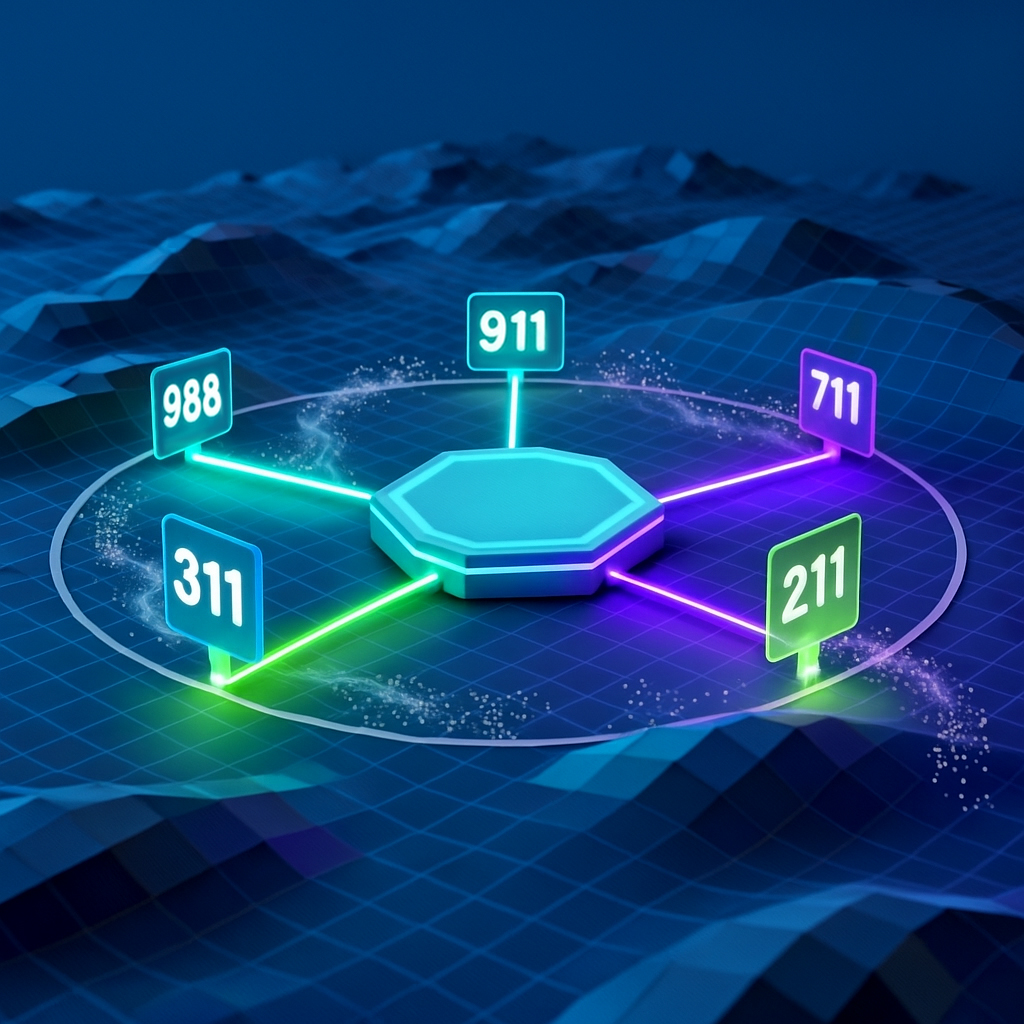The North American Numbering Plan (NANP) defines the format and numbering scheme for phone numbers, area codes, and exchanges, including special purpose 3-digit codes for specific services. The most recognized of these is 911, used to reach local emergency services. Today, public safety communications are evolving beyond traditional 911 calls, integrating other N11 services: 211, 311, 711 and the newest, 988. These numbers help ensure that every call, whether for a mental health crisis, social service referral, city maintenance issue, or accessibility support, gets the right response from the right agency.

Safety Risk Identified: If a 988 counselor determines a person is at imminent risk of harming themselves or others and the person cannot or will not share their location, the counselor may provide the 911 dispatcher with information they have.
Information Shared: This information can include the caller’s phone number or a chat user’s computer IP address.
Location: The 911 dispatcher can then use that information to locate the individual and dispatch appropriate services.
Location: Unlike 911 calls, 988 calls and texts do not automatically send the caller’s exact location to emergency services.
Purpose: 988 is designed to connect people to trained mental health professionals for crisis support, while 911 is for immediate, life-threatening emergencies that require law enforcement or other public safety responses.
Bringing 211, 311, 711 and 988 into alignment with 911 strengthens the entire response ecosystem. With clear governance, shared data, and standards-based technology, agencies can:
Deliver faster, more appropriate assistance
Improve situational awareness across systems
Reduce call volumes on 911 lines
Support accessibility for all callers
The result is a more resilient, informed, and connected public safety network, ready to serve every caller with the care and coordination they deserve.
A caller dials an N11 code.
The receiving agency assesses urgency and service fit.
If a transfer is needed, the call is connected to the correct N11 number. Behavioral health crises flow to 988; life-safety emergencies remain with 911; municipal service requests go to 311; social service navigation goes to 211; and 711 ensures access across all of the above.
Warm or cold transfers occur using established criteria and scripts. Minimal necessary data is shared to support the hand off and follow-up.
Call routing and interoperability
Location and identity
Data exchange patterns
Event and case continuity
Performance instrumentation
Privacy and auditability
Residents expect simple access to the right help. Aligning 988, 211, 311, and 711 with 911 reduces unnecessary dispatch, shortens time to care, and improves outcomes for vulnerable populations. Agencies gain clearer performance data, predictable costs, and fewer repeat calls.
Strategy and governance
Technology and data
Project management
Financing volatility
Most states operate 988 on appropriations and grants. Where a dedicated fee exists, planning is more predictable. 911nurd structures performance based funding compacts and dashboards that withstand budget cycles.
Technology gaps
Caller identity, GPS enabled dispatch, and real‑time bed registries are common missing links. We deploy modular upgrades that connect PSAP CAD, 988 centers, and mobile crisis teams without disrupting your core operations.
Geography and workforce
Rural coverage, uneven mobile response, and staffing constraints can stall service quality. We use staffing calculators, queue simulations, and regional rollout plans to target the highest impact gaps.
Inclusion and specialty access
When national specialty queues change, states still need affirming supports. We help document inclusive training and, where needed, implement targeted, state supported pathways.
Phase 1: 0 – 6 months
Phase 2: 6 – 18 months
Phase 3: 18 – 36 months
Core KPIs we track
Integration patterns we implement
Can you work within our existing vendor stack?
Yes. We integrate with common CAD, call handling, and 988 center platforms using standard APIs and contract safe data use.
What if our state lacks a 988 telecom fee?
We design multi year performance compacts and reporting so leaders can defend staffing and technology investments even under appropriations only models.
How do you handle privacy?
We align routing, logging, and dashboards to state privacy law, NENA practices, and SAMHSA/Vibrant policies. Sensitive data stays scoped to the minimum necessary.
Get started
Schedule a 988 readiness consult. We will review your governance, technology, and funding posture, then deliver a prioritized action plan with timelines, risks, and budget guidance.